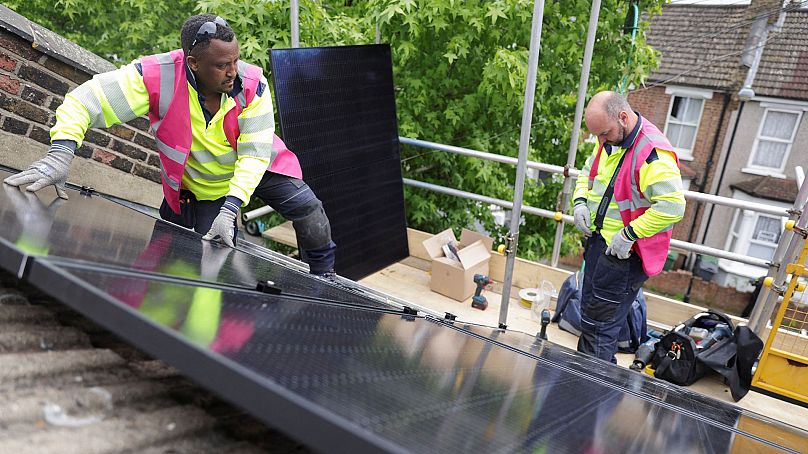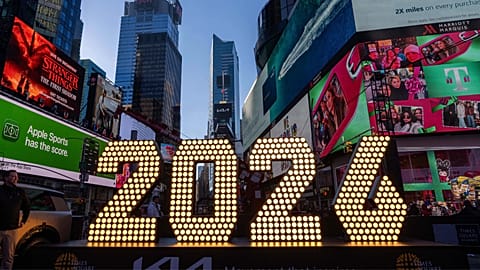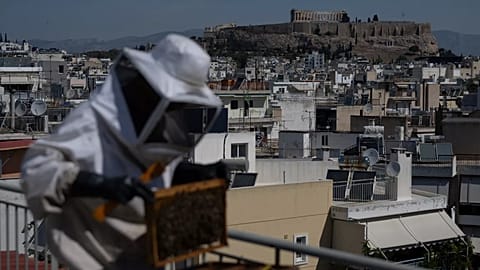These London artists raised €132,000 to bring solar power to their ‘delighted’ neighbours.
Sick of eye-watering energy bills and keen to combat climate change, two London artists have made it their mission to bring solar power to their street.
The couple have raised money for the project in eye-catching ways, including spending three cold winter weeks sleeping on the roof of their house.
The stunt helped them crowdfund £113,000 (€132,000), which they are now using to install solar panels on dozens of houses in north London.
"If you can create an offer where you actually are saying: 'Look, let's just bypass a broken political system and let's do something directly ourselves together,' that's quite an attractive offer to make to people," says Dan Edelstyn. Together with Hilary Powell, he spent a year convincing neighbours to join the project.
How will the community solar project help fight fuel poverty?
In Waltham Forest, the London borough where the artist couple lives, fuel poverty - when households cannot afford to keep their homes at an adequate temperature - is at the third highest level in the capital.
That makes the project particularly valuable for its residents, many of whom live in Victorian-era housing that can be poorly insulated and use more energy.
Ejaz Hussein, who has lived on the street for 45 years, says he is "quite delighted" by the project that he estimates will cut his electricity bill by 70 per cent.
"First of all, it's good for the environment. And second thing, I can't afford electricity anymore," the father of two says. "So that will really help as I'm struggling."
Households powered by solar panel-derived electricity draw less power from the national grid, cutting energy bills, and they can also sell any excess energy back.
Industry analysts say community projects tend to be more efficient than individual solar installations as costs fall with scale.
What's holding back the transition to renewables?
The solar panels are being installed by Octopus Energy, which says it is doing the work at cost rather than at any profit to help raise awareness of the need for adaption to renewable energy. Although solar power is carbon-free, it is intermittent, meaning it can cause problems for the grid.
"It's not just a UK problem. This is a global problem: how we move to renewables. Big changes need to happen," says Rebecca Dibb-Simkin, chief product officer at Octopus Energy.
"Communities are kind of almost forcing the hand of grids... This is people coming together and saying we want power in this way."
Britain's energy regulator Ofgem said last month it was launching a policy review to speed up the connection of low-carbon energy schemes to the electricity transmission grid.
Putting power back in the hands of communities
Dan and Hilary say they want their street to inspire others, not just to bring down bills and reduce carbon emissions, but to help drive community action, which in Britain has lost momentum.
Community projects' growth slowed to 2.4 per cent in 2022, after doubling in size each year between 2014 and 2017, according to advocacy group Community Energy England.
"We just want people to be able to access the finance that they need if they want to try and retrofit their house and decarbonise their street, and we want it to be simple and straightforward," says Dan.



















